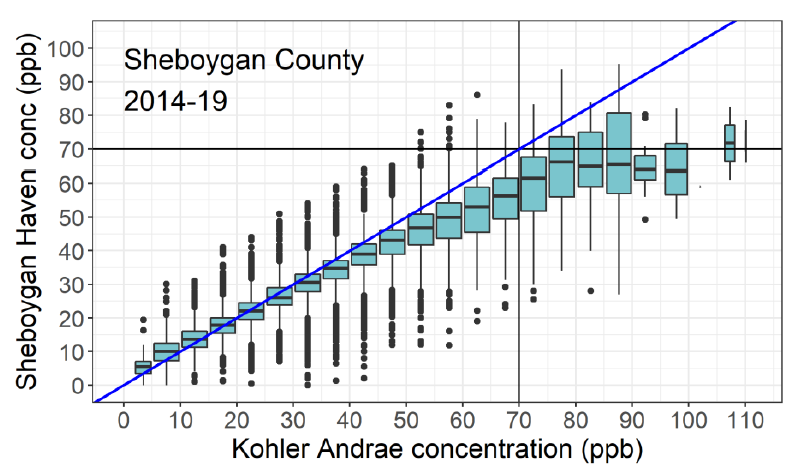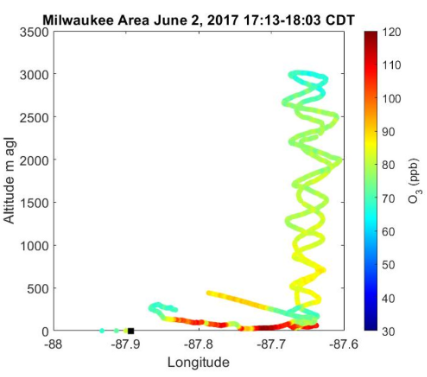Patricia A Cleary*, Angela Dickens, Molly McIlquham, Mario Sanchez, Kyle Geib, Caitlin Hedberg, Joe Hupy, Matt W. Watson, Marta Fuoco, Erik R. Olson, R. Bradley Pierce, Charles Stanier, Russell Long, Lukas Valin, Steve Conley, Mackenzie Smith
https://doi.org/10.1016/j.atmosenv.2021.118834

Figure, by Angie Dickens (LADCO) showing the difference between shoreline (Kohler Andrae) and inland (Sheboygan Haven) monitors for ozone. Caption for Atmos. Environ. is "Boxplots of 1-hour ozone concentrations comparing inland monitors (y-axes) to lakeshore monitors (x-axes) in a) Sheboygan and b) Kenosha counties. The blue lines show the 1:1 line. Boxplots show the median (line) and range (box is 25th to the 75th percentile; whiskers are highest or lowest within 1.5 x interquartile mean) of concentrations observed. The points are outliers that fall beyond the whiskers."

Combined ground, ship and aircraft data over Lake Michigan showing the limited (150 m) vertical extent of the higheste ozone.
ABSTRACT: Daytime onshore lake breezes are a critical factor controlling ozone abundance at coastal sites around Lake Michigan. Coastal counties along the western shore of Lake Michigan have historically observed high ozone episodes dating to the 1970s. We classified ozone episode days based on the extent or absence of the lake breeze (i.e., “inland”, “near-shore” or “no” lake breeze) to establish a climatology of these events. This work demonstrated variable gradients in ozone abundances based on these different types of meteorology, with the sharpest ozone concentration gradients on days with a near-shore lake breeze. On 76–82% of days in which ozone reached 70 ppb for at least 1 h, a lake breeze was present. Evidence of ozone gradients from multiple observation platforms during the 2017 Lake Michigan Ozone Study (LMOS 2017) are shown for two days with different depths of lake breezes.